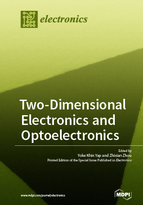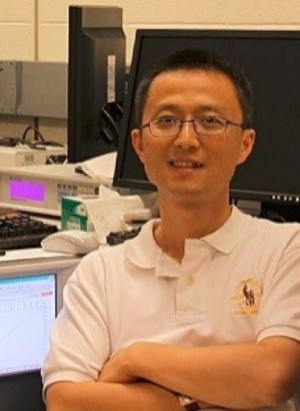Two-Dimensional Electronics and Optoelectronics
A special issue of Electronics (ISSN 2079-9292). This special issue belongs to the section "Optoelectronics".
Deadline for manuscript submissions: closed (15 March 2017) | Viewed by 65824
Special Issue Editors
Interests: fundamentals of synthesis; characterization; applications of functional nanomaterials, including B–C–N nanostructures (carbon, boron nitride, boron carbon–nitride, carbon nitride, boron, etc.)
Special Issues, Collections and Topics in MDPI journals
Special Issue Information
Dear Colleagues,
This Special Issue is intended to present scholarly papers that address some critical questions arising from two-dimensional (2D) electronic materials and devices. Two-dimensional materials, such as graphene, hexagonal boron nitride (h-BN), transition metal dichalcogenides (TMDCs), and black phosphorus have emerged as promising electronic and optoelectronic materials. These 2D materials cover a broad spectrum of electronic properties, ranging from metal, semimetals, semiconductors, to insulators. Furthermore, different 2D materials with diverse electrical and optical properties can be artificially stacked together by van der Waals assembly without the constraints of atomic commensurability, which opens up unpresented opportunities for creating a large number of heterostructures with emerging properties not present in their constituent materials. The topics covered in this Special Issue include, but are not limited to, the synthesis, electronic and thermal transport, optoelectronics and photonics, spintronics and valleytronics and various complex phenomena (e.g., superconductivity and charge density waves). We invite contribution from experimentalists and theorists to submit their high-quality manuscript for publication in this Special Issue.
Prof. Dr. Yoke Khin Yap
Dr. Zhixian Zhou
Guest Editors
Manuscript Submission Information
Manuscripts should be submitted online at www.mdpi.com by registering and logging in to this website. Once you are registered, click here to go to the submission form. Manuscripts can be submitted until the deadline. All submissions that pass pre-check are peer-reviewed. Accepted papers will be published continuously in the journal (as soon as accepted) and will be listed together on the special issue website. Research articles, review articles as well as short communications are invited. For planned papers, a title and short abstract (about 100 words) can be sent to the Editorial Office for announcement on this website.
Submitted manuscripts should not have been published previously, nor be under consideration for publication elsewhere (except conference proceedings papers). All manuscripts are thoroughly refereed through a single-blind peer-review process. A guide for authors and other relevant information for submission of manuscripts is available on the Instructions for Authors page. Electronics is an international peer-reviewed open access semimonthly journal published by MDPI.
Please visit the Instructions for Authors page before submitting a manuscript. The Article Processing Charge (APC) for publication in this open access journal is 2400 CHF (Swiss Francs). Submitted papers should be well formatted and use good English. Authors may use MDPI's English editing service prior to publication or during author revisions.
Keywords
- 2D materials, graphene, hexagonal boron nitride, transitional metal dichalcogenides, black phosphorus
- Heterostructures, van der Waals
- Electronics, optoelectronics, photonics
- Synthesis, device fabrication, electronic and thermal transport
- Spintronics, vallytronics
- Superconductivity, charge density waves, quantum phenomena
- Contact engineering, Schottky barrier
- Mobility, scattering, phonon, impurities
- Dielectric integration, capacitance







